The Bisbee Queen Mine, located in the picturesque mining town of Bisbee, Arizon a, holds a significant place in the State of Arizona’s rich history. As one of the most productive copper mines in the early 20th century, The Bisbee Queen Mine played a crucial role in fueling the economy of the region and shaping the lives of countless miners and their families.
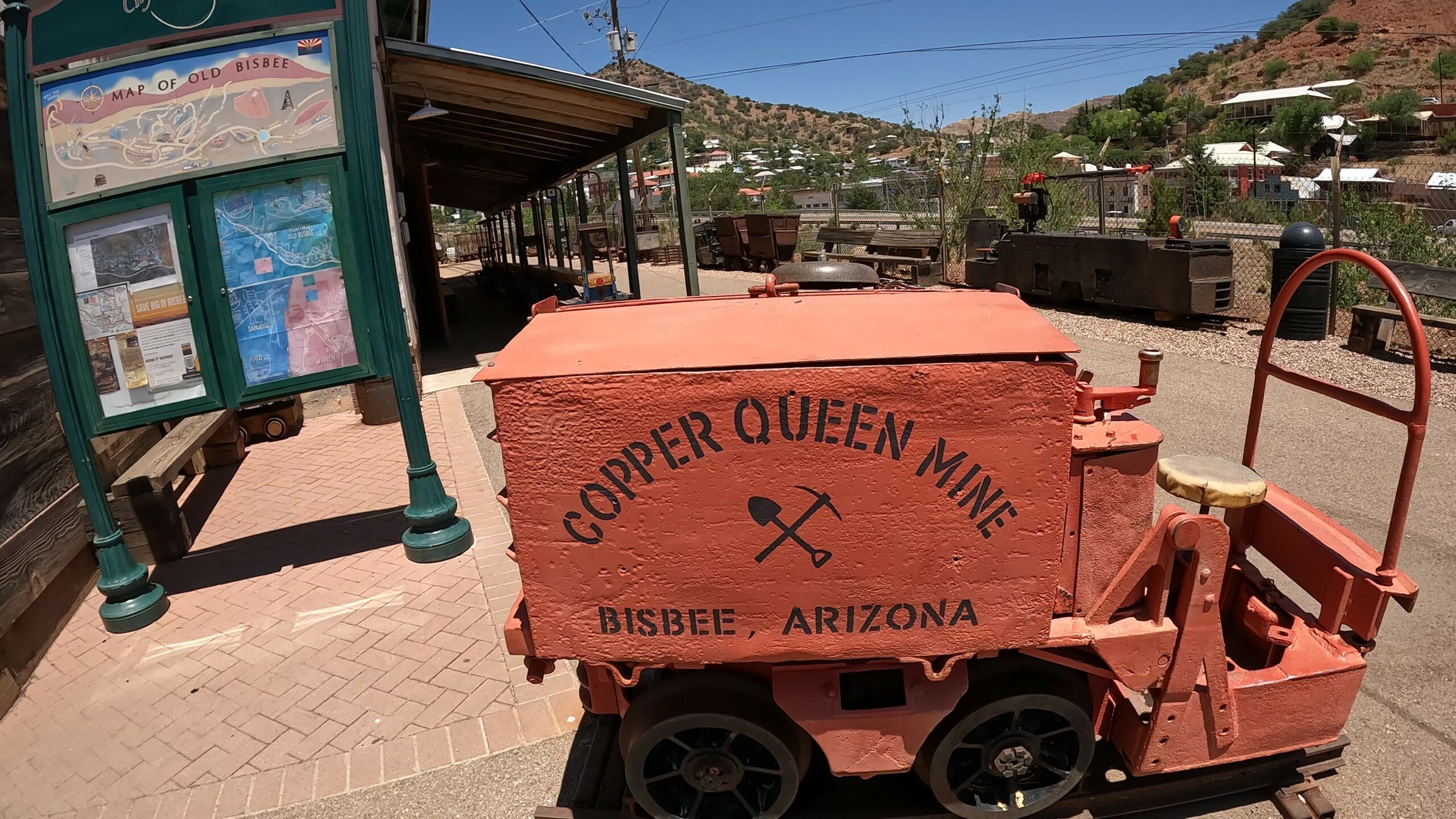
Today, the mine stands as a testament to the ingenuity and perseverance of those who toiled underground, and the Bisbee Queen Mine Tour offers visitors a unique opportunity to experience what it is to be underground in a mine. Bisbee visitors should pair this tour with the Bisbee Mining and Historical Museum.
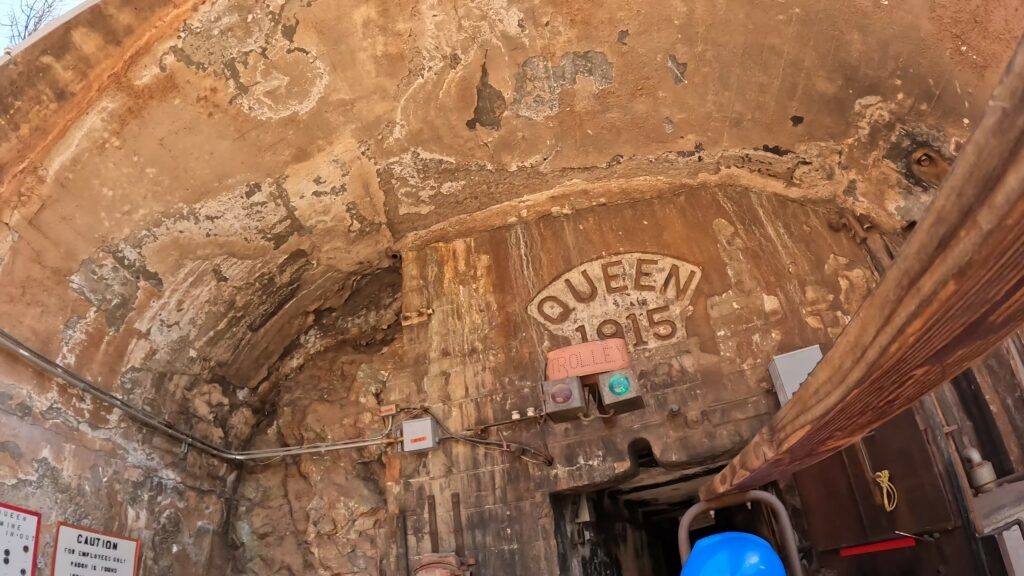
Join us as we explore the Bisbee Copper Queen Mine Tour.
What is the Bisbee Queen Mine?
The Bisbee Queen Mine was founded back in 1877 by a group of determined prospectors. They struck gold, well copper to be precise, and launched a mining boom in the area.
Copper production began with individuals in local mines or claims and then expanded by companies such as the Phelps Dodge Corporation which operated the Copper Queen Consolidated Mining Company. It eventually became the sole operator of the mining district bringing a staggering amount of wealth to the owners of the company and became the world’s greatest copper camps of all time.
Over the years, the mine expanded with a multitude of shafts and tunnels being excavated to reach deeper and richer ore deposits. As the mine expanded, so did Bisbee. Unfortunately, the underground mines closed in the summer of 1975. The town of Bisbee smartly pivoted quickly to establish the Queen Mine Tour and other improvements to create a tourist economy.
Origination of the Mine
The origination of Bisbee mining can be traced back to an army scout, Jack Dunn, who participated in a U. S. Cavalry scouting mission against the Apache Indians back in 1877. The men camped on a spot in the canyon below the spring in the Mule Mountains, where they found signs of mineralization indicating the presence of lead, copper, and possibly even silver. This location is nearby a couple hundred yards from the entrance to the Queen Mine that the tour uses today.
Dunn made a deal with a prospector named George Warren. Warren was to locate the claims and work the property as his partner. Supposedly, as Warren headed to check out the claim, he met up with some friends for some whiskey drinking. They struck a deal and staked new claims and left Dunn out of the deal. Interesting story!
Early Mining Years
Copper production began around 1880 with individuals and then companies with capital gradually taking over the individual claims and bringing them into production. One of these companies was the Phelps Dodge Company. Through a subsidiary, the Copper Queen Consolidated Mining Company became the dominant force and eventually the sole operator of the mining district. It was one of the richest mineral sites in the world, producing nearly 3 million ounces of gold, and more than 8 billion pounds of copper, not to mention the silver, lead, and zinc that came from these rich lands.
Bisbee grew into one of the largest cities in Arizona Territory by the early 1900s. With a population of over 20, 000 by 1910, Bisbee was one of the most cultured cities in the West.
The Bisbee Deportation Event
A very sad and troubling event occurred in 1917, which sent ripples throughout the country. Phelps Dodge, the major mining company in the area, illegally kidnapped and deported about 1, 300 striking mine workers, their supporters, and citizen bystanders by 2, 000 members of a deputized posse. And this happened on July 12th, 1917.
The miners attempted to organize for better working conditions and wages, but Phelps Dodds didn’t want them to unionize. They actually made allegations that these workers were members of the Socialist Affiliated Industrial Workers of the World. They were held at the Warren Ballpark before being loaded on cattle cars and deported on a 16-hour journey covering 200 miles without food and water.
Later Mining Times
Open pit copper mining, a more efficient method, was successfully introduced in Bisbee to meet the growing demand in World War I. Covering almost a century, Bisbee’s mines were responsible for an estimated production of over 8 billion pounds of copper, 102 million ounces of silver, and 2. 8 million ounces of gold, along with millions of pounds of zinc, lead, and manganese. By 1974, Ore reserves were depleted. Phelps Dodge shut down all open pit mining operations in mid-1974 and closed underground mining in December 1974.
Post-Mining Transition to Tourism
With the mine closures in 1974, the Mayor of Bisbee, Chuck Eads, smartly thought about how to pivot the town from a mining-heavy one to one that supports tourism. He wanted to keep the history of mining alive in Bisbee. Hoping to attract tourists. The City of Bisbee, the Economic Development Administration, Phelps Dodge, and volunteers pitched in either money or time to get the Mine Tour project underway.
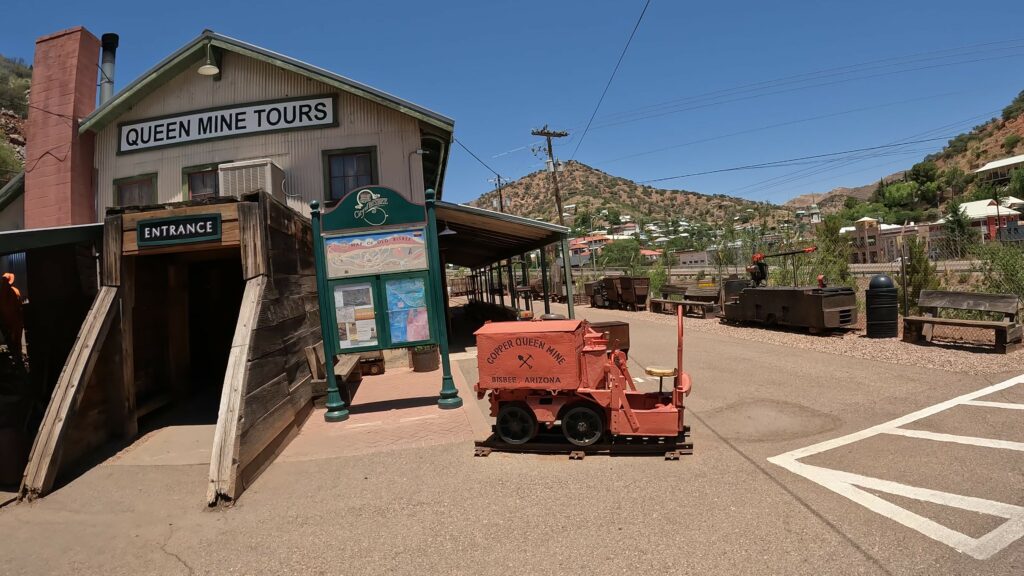
On February 1st, 1976, the Queen Mine Tour was officially open to visitors. More than a million visitors from all 50 states and more than 30 foreign countries have enjoyed the ride into the mountain on the Underground Mine Tour train.
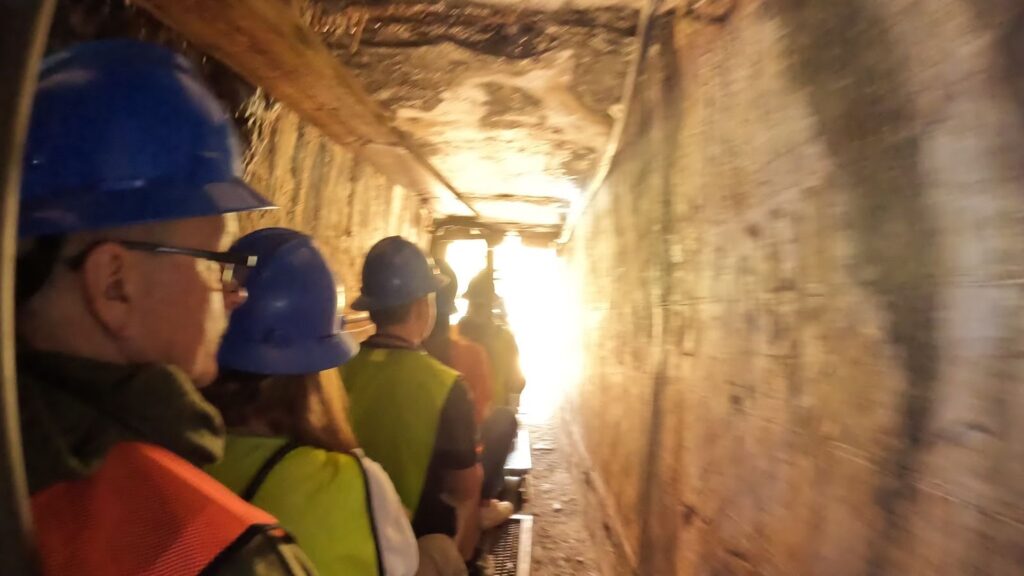
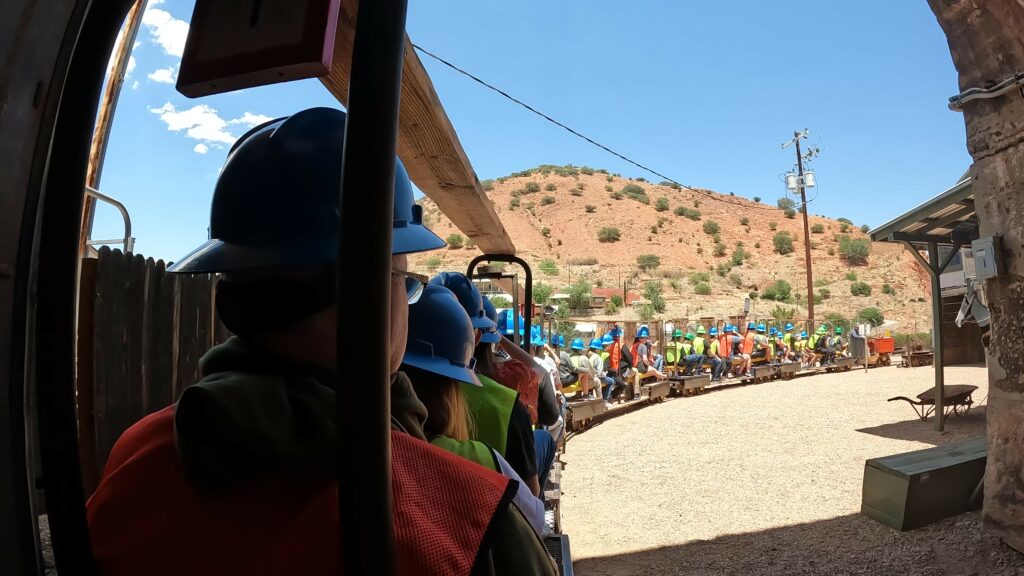
What to Expect on the Tour of the Queen Mine?
When you arrive in the parking lot of the Queen Mine Tour building, park and head inside. Sign in at the ticket desk. Then you can explore the building with its many mining exhibits. You will have plenty of time to browse and purchase some of the rocks, minerals, and other merchandise.
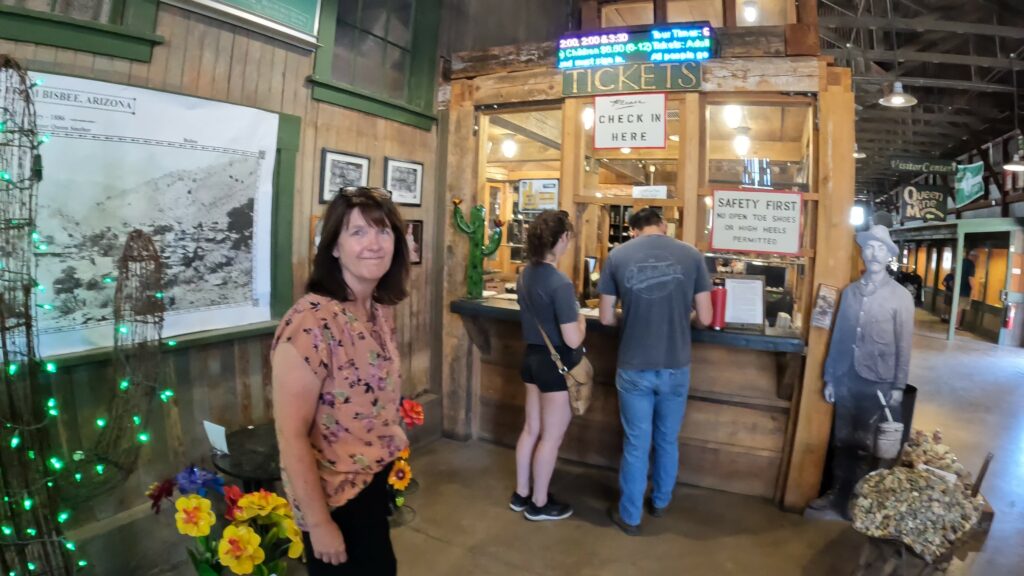
Each tour group is led by a guide and experienced former miners. The tour guide will describe typical mining days and techniques that were used in the mines. He also cover safety and the dangers of mining, and much more.
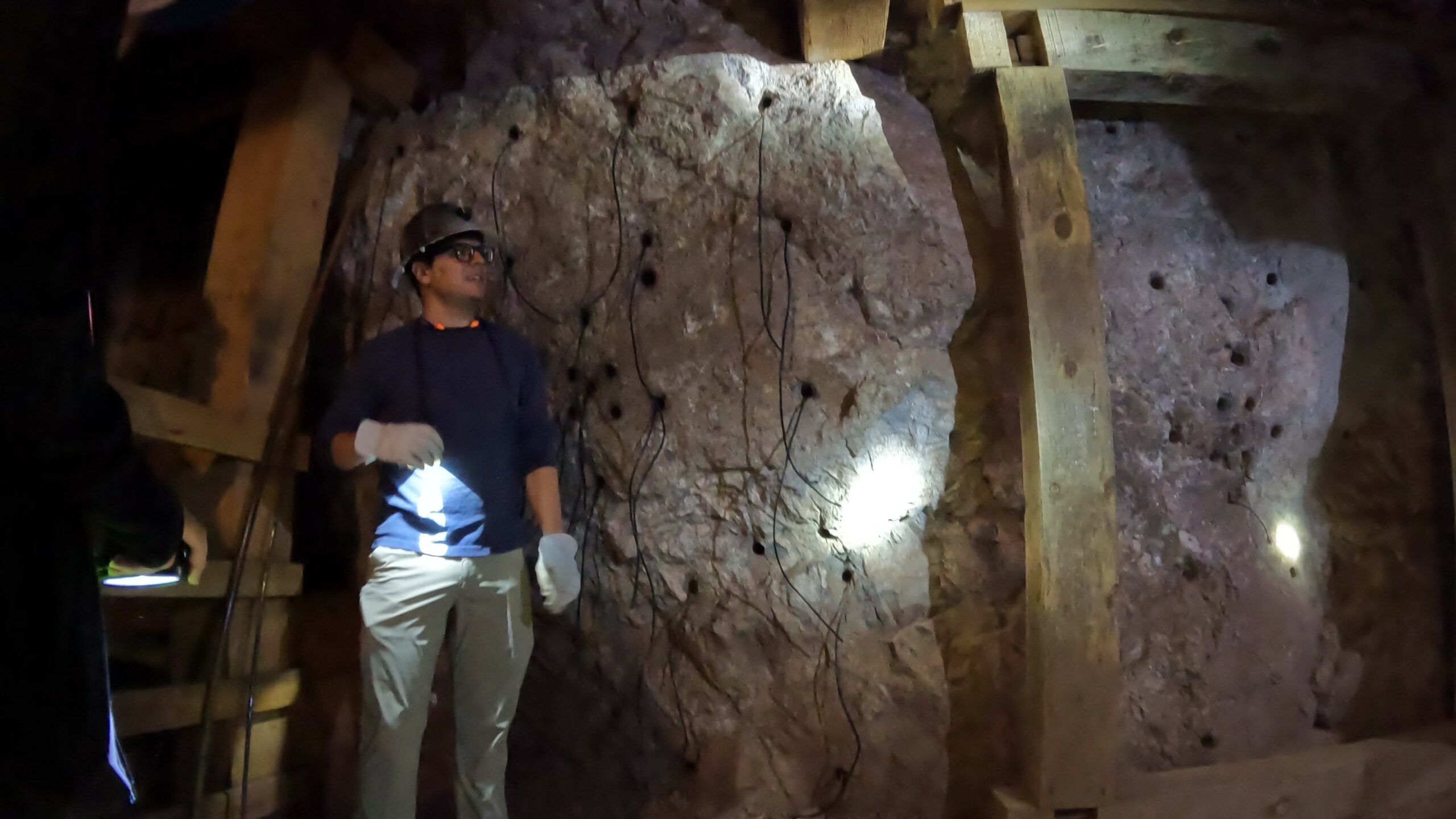
Safety in the Mine
Safety for all visitors is a strong presence during the tour. When your tour is called, you will be given your own personal hard hat to wear, a miner’s headlamp, and a safety vest. Following a brief introduction and a comprehensive safety briefing, you’ll board an original mine train for this underground excursion. Passengers sit straddling the small train’s bent seats akin to riding a bicycle. The tour is a half-mile round-trip ride complete with two stops. Note that you can not wear any open toe shoes while on the Tour.
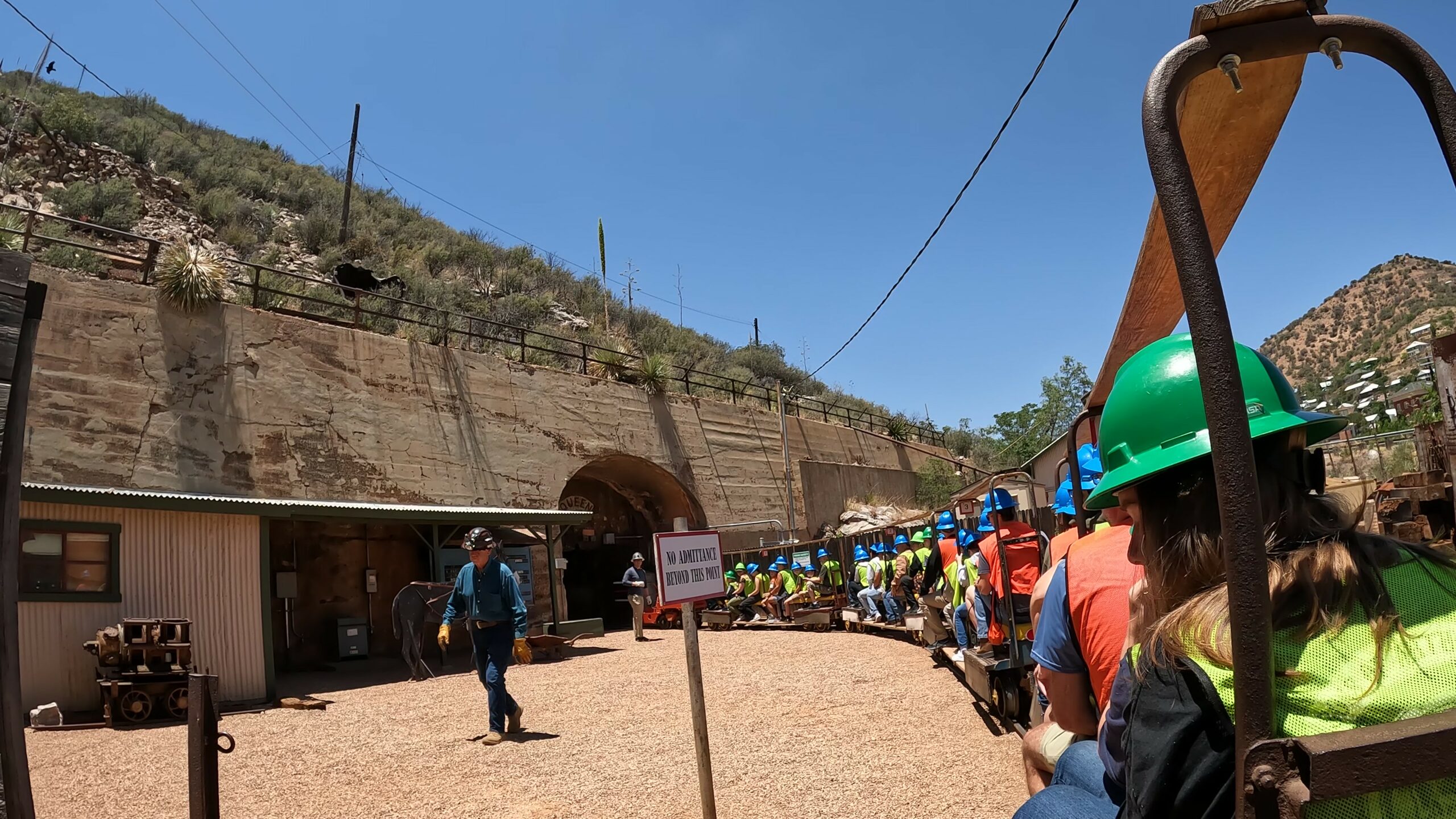
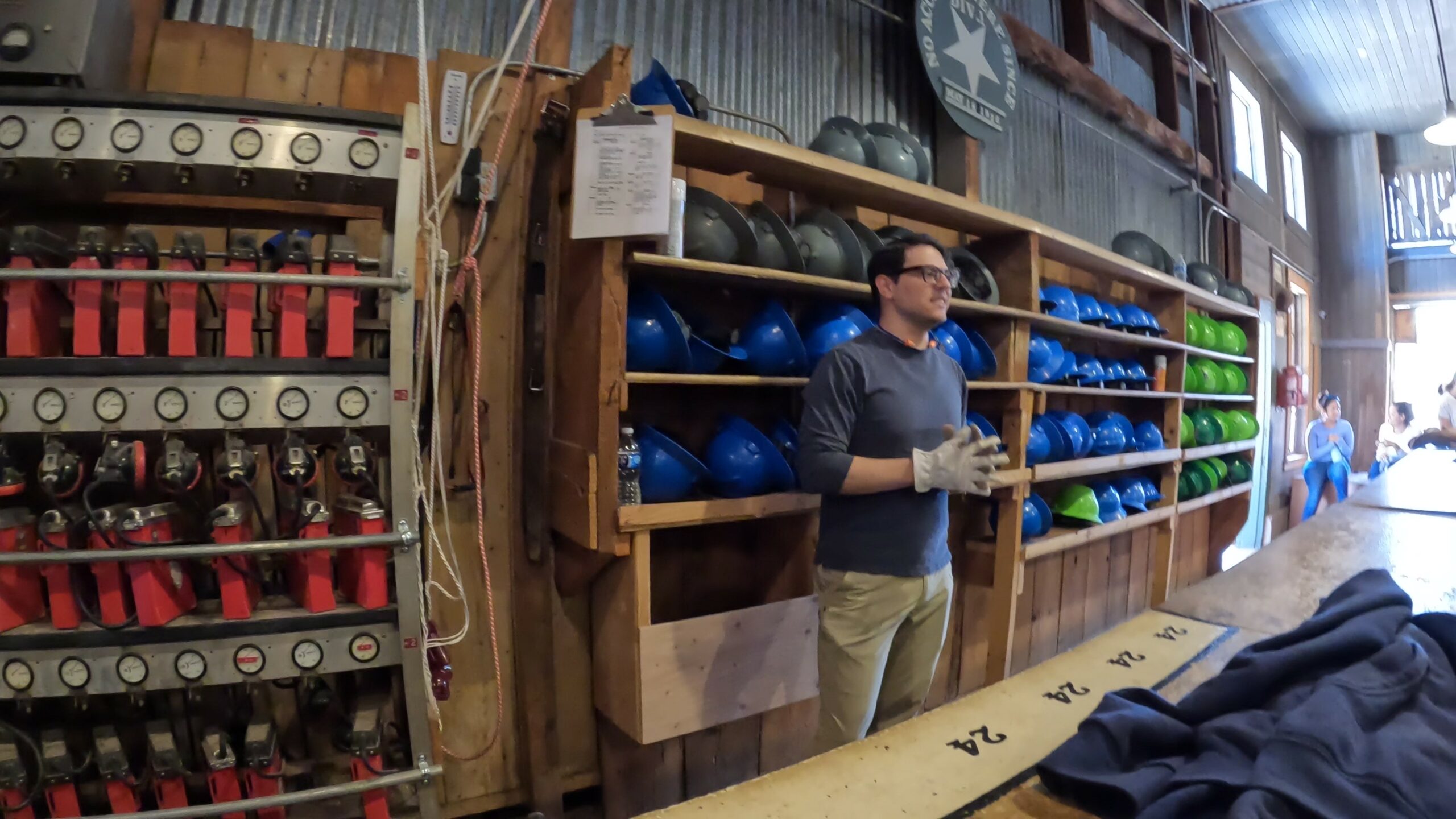
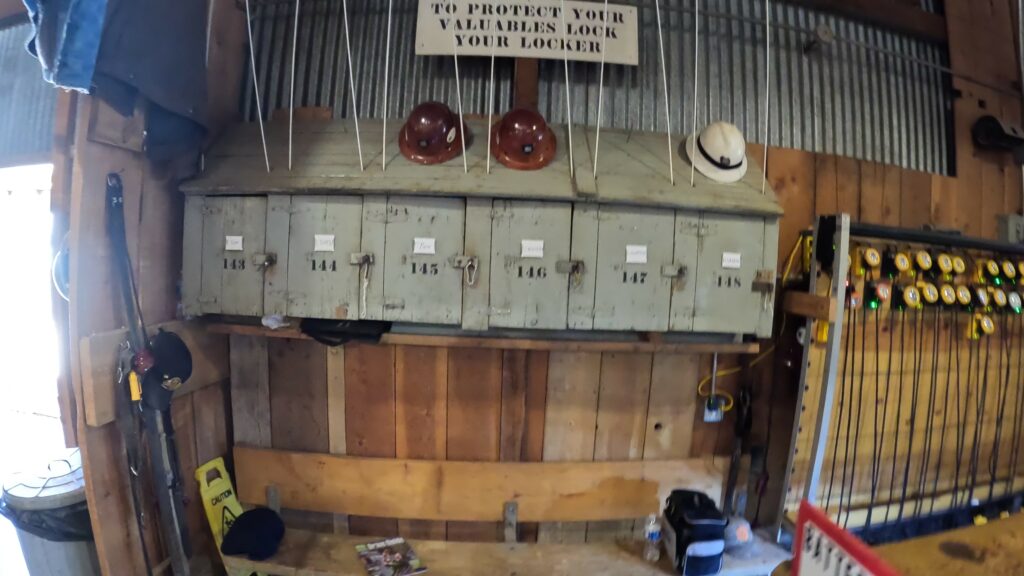
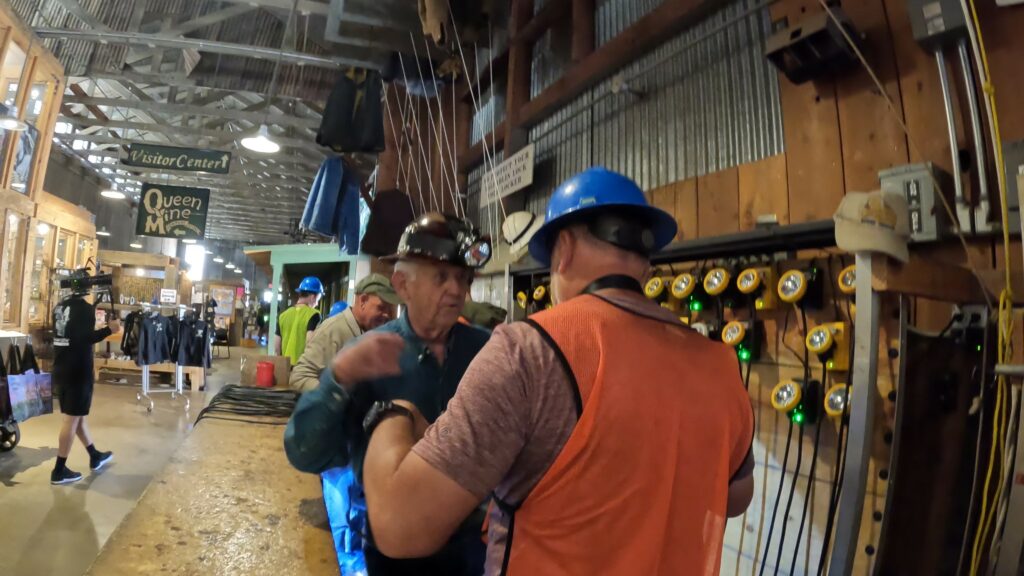
At one stop, you will disembark the train and walk a 300 foot path through a tunnel where you will trace the footsteps of miners past.
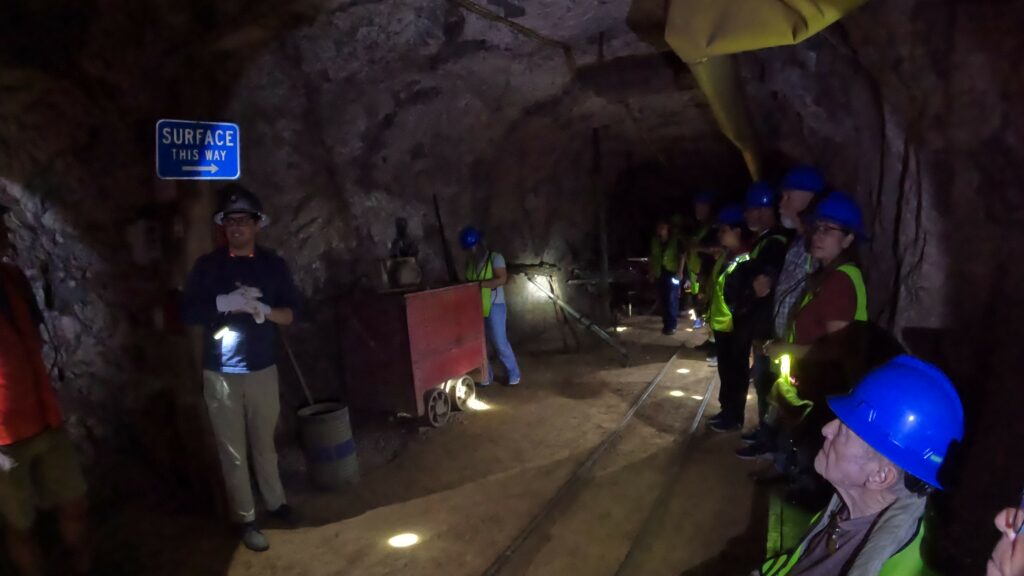
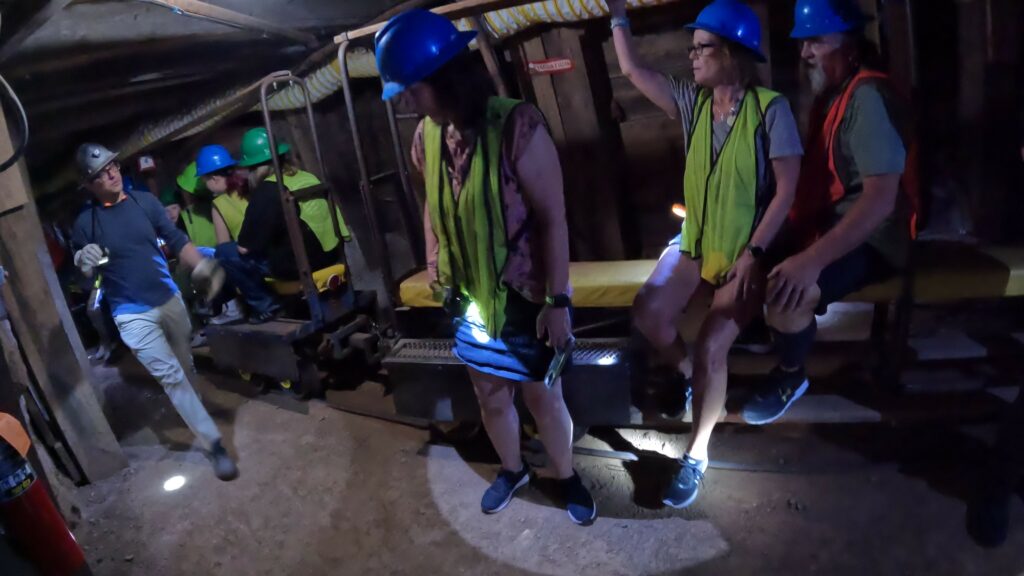
36 Steps to a Huge Open Cavern
At the other stop, you’ll climb a series of 36 steps to see some of the equipment the miners used. You can opt to remain on the train with the accompanying tour guide if climbing the steps is difficult for you.
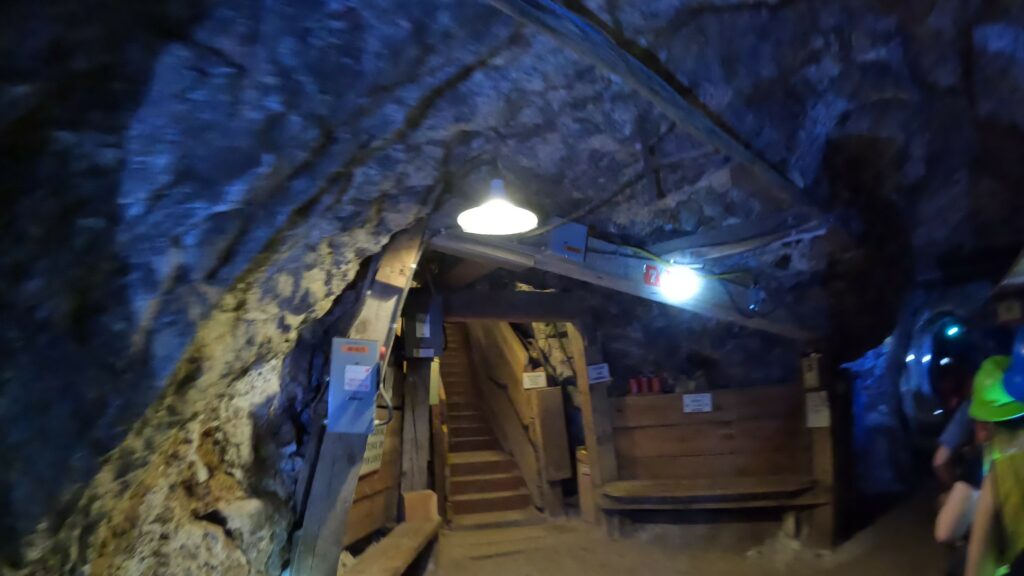
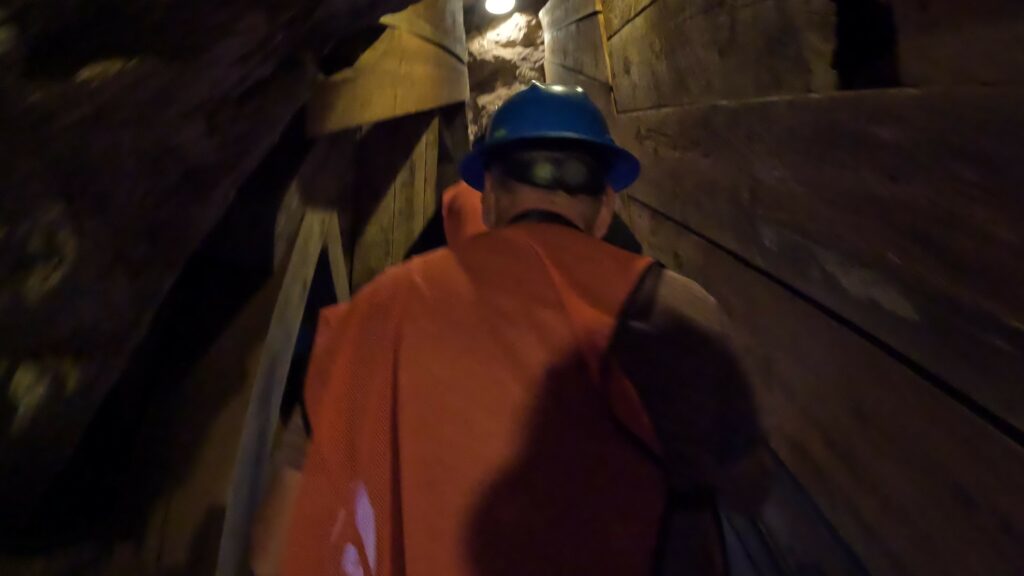
The mine train will take you 1, 500 feet into the mine. The climate in the mine is very cool, so if you aren’t wearing a long-sleeved shirt, you might want to bring along a light sweater or jacket.
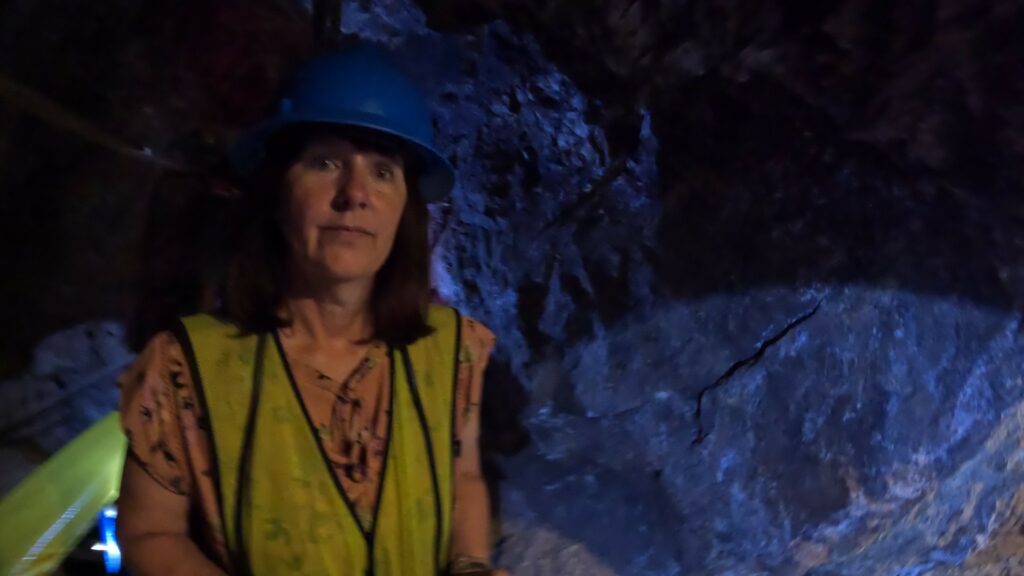
The tour will usually take around 1 hour or a little more.
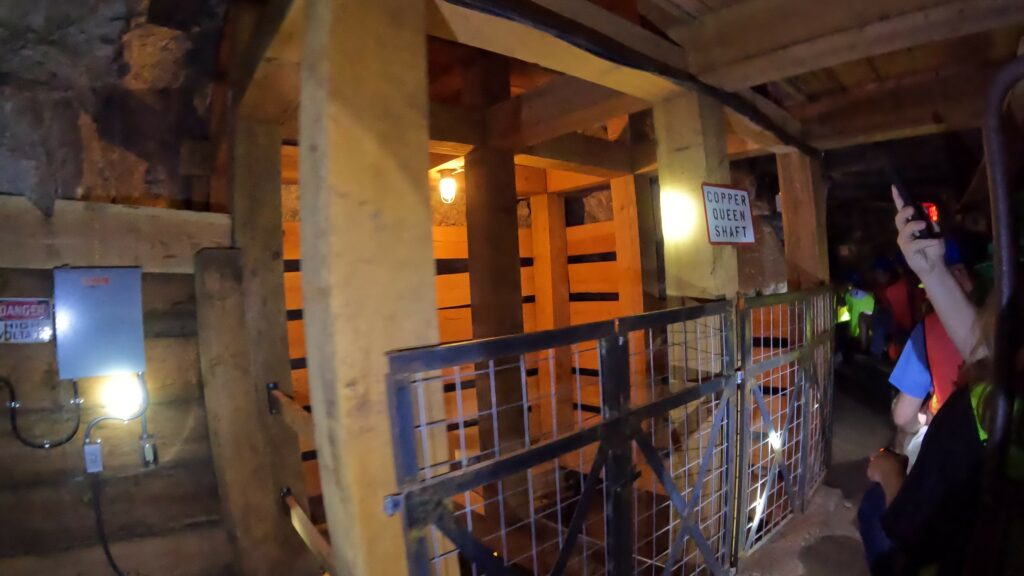
Where is the Queen Mine Tour Located?
The Queen Mine Tour is located in Bisbee, Arizona, which is southeast of Tucson. Driving on I-10, take the Benson, Arizona exit on Highway 80. And head south for 47 miles. This is a beautiful drive, so keep your eyes out open to see all the climb up into the mountains. You will pass through the Mule Mountain Pass Tunnel.
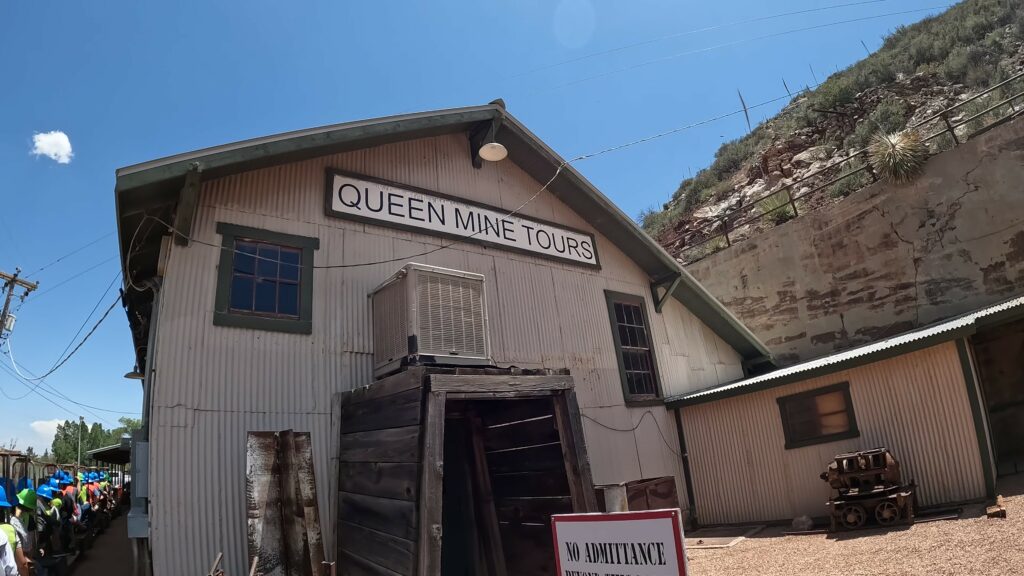
We also went through a Border Patrol checkpoint, so that was pretty cool. Just a reminder to show you how close you are to Mexico.
Conclusion
The City of Bisbee and the Bisbee Queen Mine Tour was a ton of fun and well worth the drive from Tucson. It allows visitors to experience a town founded on mining but now focused on being an artist’s scene and tourism.
A ride on the train going to the Queen Mine was also absolutely fun. It gives visitors an insight into what working in the mines must have been like. We highly recommend visiting Bisbee and the Queen Mine Tour if you get an opportunity.
Look, if you like this content, you will want to check out all our other posts covering Tucson and its surrounding attractions, including the Saguaro National Park and the Signal Hill Petroglyphs Trail, Bisbee and the Mining and Historical Museum and the Lavender Pit, Tombstone with its Boothill Cemetery and the Old Historic Town, Benson and historic Railroad signs and murals, San Xavier Del Bac Mission Church, along with our favorite B & B throughout the whole trip which was the Hacienda Linda Bed and Breakfast.
Also, check out all our other posts covering the many fun and historical attractions we have on our site here covering Arizona Travel, along with our YouTube videos on our Epic Arizona Trip and much more on our Travel with D & E channel. Do us a favor and subscribe. Like the post, and share it with your family and friends, they will enjoy it as well.
Remember to put a comment below if you visited Bisbee or went on the Queen Mine Tour. Let us know how you enjoyed it!

Leave a Reply